The fastest birds in the world – Top 10
Birds have always been known for their incredible ability to soar through the skies, and their agility and speed are a testament to the power of evolution. From the small, nimble hummingbirds to the massive, powerful eagles, birds come in many sizes, and each one is unique in its own way. In this article, we will take a closer look at the top 10 fastest birds in the world. From the peregrine falcon to the white-throated needletail, we will explore the incredible speed, aerodynamics, and hunting abilities of these feathered fliers. So hold on tight as we dive into the world of the fastest birds and discover what makes them so special.
The question of which bird is the fastest in the world has always fascinated mankind. Just like the question of which is the fastest mammal on land, who dominates in the water, etc.
What is the fastest bird in the world?
Most of our readers probably know the answer to this question and know that it is: peregrine falcon (Falco peregrinus). The answer to the question about the second and third places is also known to people who have already learnt the summary the fastest animals in the world. Today’s statement gives an idea of which birds occupy the next positions. Interestingly, in the statement also appears the largest bird in the world, which, although cannot flight, but reaches an impressive speed.
Before we get to the table of bird speed records, here is a brief overview of the fastest representatives of the avian family.
The fastest birds in the world – characteristic

1. Peregrine Falcon (Falco peregrinus) – the fastest bird in the world
The fastest bird is represented by the peregrine falcon. During the dive flight, the peregrine falcon can reach a speed of up to 350 km/h (217 mph)! The record speed of the falcon, which was able to measure was 389 km/h (242 mph).
Some sources claim that during the dive falcon can reach speed over 400 km/h (248 mph) …
The Peregrine Falcon (Falco peregrinus) is a widespread bird of prey found on every continent except Antarctica. It is known for its impressive speed, which is the fastest of any animal on Earth, and for its ability to make sharp, agile turns while in flight.
Peregrine Falcons are medium-sized birds, with males typically weighing around 700 grams (1.5 pounds) and females weighing around 1,200 grams (2.6 pounds). They have long, pointed wings and a distinctive black “moustache” on their face. The upperparts of their body are blue-gray, while the underparts are white with fine, dark barring.
Peregrine Falcons are adapted to hunting in flight, and they prey on a variety of birds, such as ducks, geese, and pigeons. They are known to be particularly skilled at catching birds in mid-flight, and they are often seen flying high above their prey before diving down to catch them. They also hunt small mammals, such as rabbits and rodents, and occasionally insects.
Peregrine Falcons are found in a variety of habitats, including mountains, grasslands, and coastal cliffs. They are adaptable birds and are found in many urban areas, where they can be seen hunting birds around buildings.
In the past, Peregrine Falcons were heavily impacted by the use of pesticides, which led to population declines and the species being listed as endangered in some areas. However, thanks to conservation efforts, the population has recovered in many parts of the world, and the species is no longer considered endangered.

2. Golden Eagle (Aquila chrysaetos)
The second position was taken by Golden Eagle. Although this bird is a lot bigger than a falcon, and can not boast of its maneuverability, during a dive reaches a speed of up to 320 km/h (199 mph).
Famous are his performances during courtship, when the eagle grabs the stone from the ground, lifts it up and throws with a bow, then diving at breakneck speed, catches it on the fly, before the stone has time to touch the ground …
The Golden Eagle (Aquila chrysaetos) is a large bird of prey native to North America, Europe, and Asia. It is known for its impressive size, with a wingspan of up to 2.5 meters (8 feet) and a weight of up to 4.5 kilograms (10 pounds).
Golden Eagles are predominantly brown in color, with a golden sheen on the back of their head and neck, which gives them their name. They have long, broad wings, a large head, and a hooked beak. The wings and tail are marked with distinctive white feathers.
Golden Eagles are found in a variety of habitats, including mountains, grasslands, and forests. They are adapted to hunting in open areas, and they prey on a variety of small mammals, such as rabbits, hares, and rodents. They are also known to hunt birds, reptiles, and insects.
Golden Eagles are known for their impressive hunting abilities and their powerful, agile flight. They are able to reach speeds of over 200 kilometers per hour (120 mph) when diving, and they are skilled at making sharp turns while in flight.
Golden Eagles are found throughout much of the northern hemisphere, and they are considered a symbol of strength and courage in many cultures. In some parts of the world, they are considered a threatened or endangered species due to habitat loss and other factors. However, in other areas, their population is stable or increasing.
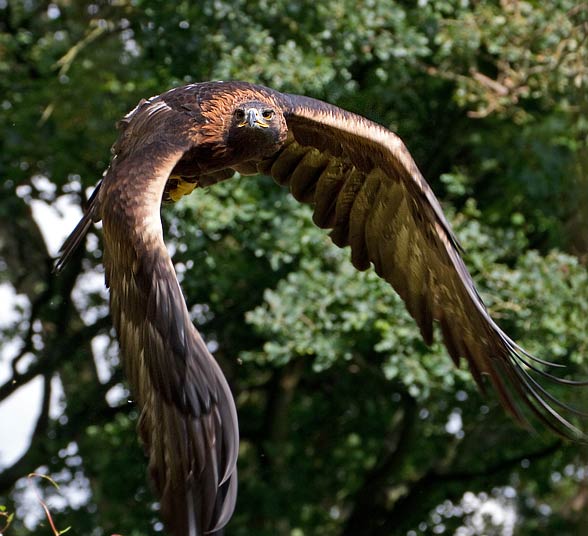
6. Common Swift (Apus apus)
Swift is an amazing bird – he spends most of his life in the air. He hunts and eats in the air, in the air even sleeping … Nature so eminently adapted swift for flight, that his legs were shortened and the bird has a problem with the start of the ground. Mainly therefore swifts choose tall buildings, chimneys or vertical surfaces, from which it can easily start gliding.
Although it might seem that it is similar to a swallow, in reality it is not. It is from her many times faster. Common Swift reaches a top speed of 170 km/h (106 mph), although some sources claim that can fly at a speed of 180 km/h (112 mph) in horizontal flight.
The Common Swift (Apus apus) is a small, agile bird found throughout much of Europe, Asia, and Africa. It is known for its fast and erratic flight, which makes it difficult to spot and follow.
Common Swifts are small birds, with a body length of around 12 centimeters (5 inches) and a wingspan of around 25 centimeters (10 inches). They have long, narrow wings and a short, square-shaped tail. They are dark brown or black in color, with a pale throat and a distinctive white rump.
Common Swifts are adapted to life on the wing, and they spend most of their lives in the air, only coming to land to breed and raise their young. They feed on insects, which they catch while in flight, and they are known to fly at high altitudes in search of their prey.
Common Swifts are found in a variety of habitats, including forests, grasslands, and urban areas. They are migratory birds, and they travel long distances between their breeding and wintering grounds.
Common Swifts are a common and widespread species, and they are not considered threatened or endangered. However, like many other bird species, they are impacted by habitat loss and other human activities, and their populations may be declining in some areas.

The fastest birds in the world – TOP 10
- Peregrine Falcon (Falco peregrinus) – 389 km/h (242 mph) / diving
- Golden Eagle (Aquila chrysaetos) – 320 km/h (199 mph) / diving
- Steppe eagle (Aquila nipalensis) – 300 km/h (186 mph) / diving
- Gyrfalcon (Falco rusticolus) – 209 km/h (130 mph) / diving
- Red-tailed hawk (Buteo jamaicensis) – 190 km/h (118 mph) / diving
- Common Swift (Apus apus) – 171 km/h (106 mph)
- White-throated needletail (Hirundapus caudacutus) – 170 km/h (105 mph)
- Eurasian Hobby (Falco subbuteo) – 160 km/ (100 mph)
- Frigatebird – 153 km/h (95 mph)
- Spur-winged Goose (Plectropterus gambensis) – 142 km/h (88 mph)
- Homing pigeon (Columba livia domestica) – 140 km/h (87 mph)
- Red-breasted Merganser (Mergus serrator) – 130km/h (81 mph)
- White-rumped Swift (Apus caffer) – 124 km/h (77 mph)
- Canvasback (Aythya valisineria) – 116 km/h (73 mph)
- Eider duck (Somateria mollissima) – 113 km/h (70 mph)
- Common Teal (Anas crecca) – 109 km/h (69 mph)
- Wandering albatross (Diomedea exulans) – 108 km/h (67 mph)
- Wild Duck (Anas platyrhynchos) – 105 km/h (65 mph)
- Northern Pintail (Anas acuta) – 105 km/h (65 mph)
- Mallard/wild duck (Anas platyrhynchos) – 105 km/h (65 mph)
- Gannet – 100 km/h (63 mph)
- Anna’s Hummingbird (Calypte anna) – 98 km/h (61 mph)
- California condor (Gymnogyps californianus) – 90 km/h (56 mph)
- Common Ostrich (Struthio camelus) – 72 km/h (45 mph)
Notes to the statement
At number 24 is the common ostrich, which reaches a top speed of 72 km/h (45 mph) when running. We have been told by one source that this bird can run at a speed of 98 km/h (61 mph) over a very short distance. However, as we cannot confirm this speed, we present 72 km/h (45 mph).
You should also look at how many items on the list are birds from the duck family – Anatidae.
The fastest birds in the world – Top 10
chart speed [km/h]

The fastest birds in the world – Top 10
chart speed [mph]

3. The Steppe Eagle (Aquila nipalensis)
Majestic Nomad of the Plains
The steppe eagle, scientifically known as Aquila nipalensis, is a magnificent bird of prey that roams the vast grasslands and steppe regions of Eurasia. With its striking appearance and remarkable adaptations, the steppe eagle captivates the hearts of bird enthusiasts and researchers alike. In this article, we will explore the key characteristics of the steppe eagle, including its physical attributes, impressive size, and unique behaviors that enable it to thrive in its nomadic lifestyle.
- Physical Attributes
The steppe eagle exhibits an impressive stature, showcasing its regal presence on the plains. On average, it measures 60 to 89 cm (24 to 35 in) in length, with a wingspan ranging from 165 to 190 centimeters (65 to 74.8 inches) with the maximum wingspan 216 cm (7 ft 1 in). Adult steppe eagles typically weigh between 2.5 and 4.5 kilograms (5.5 to 9.9 pounds), with females being slightly larger than males. 2.5 to 3.5 kg (5.5 to 7.7 lb) in males; 2.3 to 4.9 kg (5.1 to 10.8 lb) in females. - Adaptations for Steppe Life
To navigate and survive in the expansive steppe regions, the steppe eagle possesses specialized adaptations. Its broad wings allow efficient soaring and gliding, aiding in covering long distances during migration and in search of food. The eagle’s sharp, curved beak is ideal for tearing into the flesh of its prey, while its strong talons assist in capturing and grasping small to medium-sized mammals and birds. - Range and Habitat
The steppe eagle has a vast distribution, inhabiting open grasslands, steppes, and semi-desert areas across Eurasia. Its range extends from Eastern Europe to Central Asia, including parts of Russia, Mongolia, and India. Steppe eagles are migratory birds, traversing great distances during their seasonal movements, often following the availability of prey and favorable weather conditions. - Migration and Nomadic Behavior
One of the most fascinating aspects of the steppe eagle’s life is its nomadic nature. These eagles undertake extensive seasonal migrations, covering thousands of kilometers in search of suitable breeding grounds and abundant food sources. During migration, steppe eagles form impressive flocks, soaring together in the skies, creating a spectacle that showcases their collective strength and adaptability. - Conservation Status
While the steppe eagle population remains relatively stable, certain regional populations may face conservation challenges due to habitat loss, degradation, and illegal hunting. Conservation efforts are vital to protect the steppe eagle’s habitats, raise awareness about their ecological importance, and reduce threats to their survival.
The steppe eagle’s majestic appearance, impressive size, and nomadic behavior make it an enchanting inhabitant of the vast Eurasian grasslands. Equipped with specialized adaptations for soaring and hunting, this remarkable bird exemplifies the resilience and adaptability of avian predators. Understanding the unique characteristics of the steppe eagle offers us a glimpse into the intricate dynamics of wildlife and the remarkable ways in which animals have adapted to thrive in diverse ecosystems.

4. The Gyrfalcon (Falco rusticolus)
Arctic Raptor of the Skies
The gyrfalcon, scientifically known as Falco rusticolus, is a majestic bird of prey that reigns supreme in the Arctic regions. Renowned for its beauty, power, and adaptability, the gyrfalcon is an iconic species that captivates the imagination of bird enthusiasts and researchers alike. In this article, we will explore the distinctive characteristics of the gyrfalcon, including its physical attributes, impressive size, and specialized adaptations for survival in harsh Arctic environments.
- Physical Attributes
The gyrfalcon is one of the largest falcon species, showcasing an imposing appearance. It typically measures between 48 and 61 centimeters (19 to 24 inches) in length, with a wingspan ranging from 110 to 130 centimeters (43 to 51 inches). Adult gyrfalcons exhibit sexual dimorphism, with females being noticeably larger than males. Their weight varies between 800 grams and 2 kilograms (1.8 to 4.4 pounds). - Adaptations for Arctic Life
Living in the harsh Arctic environments, the gyrfalcon possesses several specialized adaptations to cope with extreme cold and snowy conditions. Its plumage serves as excellent insulation, consisting of dense feathers that help retain body heat. The gyrfalcon also has a robust beak and talons, allowing it to capture and subdue its prey, even in snowy landscapes. - Range and Habitat
The gyrfalcon is predominantly found in Arctic and subarctic regions, including the tundra of North America, Europe, and Asia. It is well-adapted to various habitats within its range, including coastal cliffs, mountainous areas, and open tundra. Gyrfalcons construct nests on rocky ledges or on the ground, where they raise their young. - Hunting Skills
The gyrfalcon is an agile and formidable predator, specializing in hunting a wide range of avian prey. It relies on its exceptional speed and aerial maneuverability to pursue and capture birds in flight. Its diet primarily consists of waterfowl, grouse, ptarmigans, and other medium-sized birds found in its habitat. Gyrfalcons employ stealthy hunting techniques, often ambushing their prey from perches or executing swift and precise aerial attacks. - Conservation Status
The gyrfalcon’s population is relatively stable, with regional variations in abundance. However, habitat loss, disturbance near nesting sites, and climate change-induced alterations to Arctic ecosystems pose potential threats to this species. Continued monitoring and conservation efforts are necessary to ensure the long-term survival of the gyrfalcon and its unique Arctic habitat.
The gyrfalcon stands as a testament to the resilience and adaptability of avian predators in extreme environments. Its imposing size, specialized adaptations, and exceptional hunting skills make it a true Arctic raptor. Understanding the distinctive characteristics of the gyrfalcon provides us with insights into the intricate balance of nature and the remarkable ways in which animals thrive in some of the harshest regions on Earth.
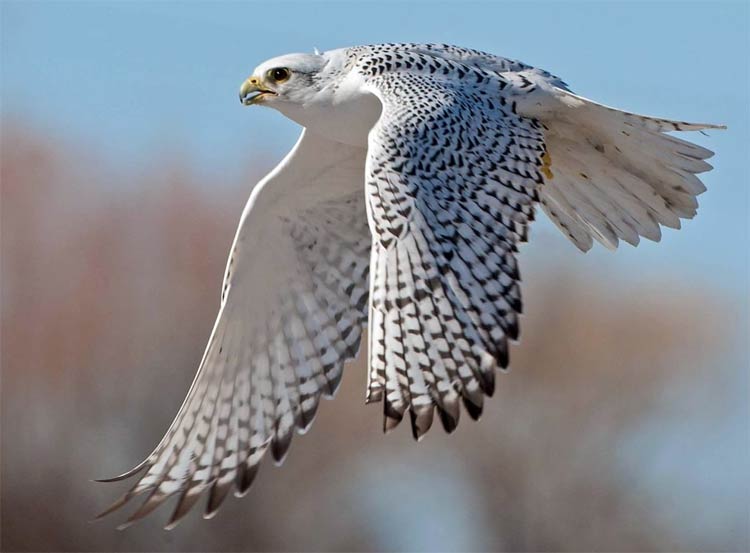
5. The Red-tailed Hawk (Buteo jamaicensis)
Master of the Skies
The red-tailed hawk, scientifically known as Buteo jamaicensis, is a captivating bird of prey that embodies grace, power, and adaptability. With its distinctive features and widespread distribution, the red-tailed hawk has become an iconic symbol of North American raptors. In this article, we will explore the key characteristics of the red-tailed hawk, including its physical attributes, impressive size, and remarkable hunting skills.
- Physical Attributes
The red-tailed hawk possesses a robust and athletic build, showcasing its prowess as a formidable hunter. On average, it measures between 45 and 65 centimeters (17.7 to 25.6 inches) in length, with a wingspan ranging from 110 to 145 centimeters (43.3 to 57.1 inches). Adult red-tailed hawks typically weigh between 690 and 1,600 grams (1.5 to 3.5 pounds), with females being larger and heavier than males. - Plumage and Identification
The red-tailed hawk exhibits a range of plumage variations, but most individuals have a reddish-brown tail that serves as a distinguishing feature. Adults typically display dark brown upperparts and a pale underbelly with a characteristic belly band. Juvenile red-tailed hawks have a mottled appearance, with brown streaks on a pale background. Their plumage gradually transitions as they mature. - Adaptations for Flight and Hunting
Red-tailed hawks are exceptional aerial predators, equipped with specialized adaptations for flight and hunting. Their broad wings provide excellent lift and maneuverability, enabling them to soar effortlessly across vast territories. The hawk’s sharp, curved beak and powerful talons are well-suited for capturing and dispatching their prey, which primarily consists of small mammals, birds, reptiles, and occasionally, carrion. - Range and Habitat
The red-tailed hawk has a wide distribution throughout North America, inhabiting diverse habitats such as forests, grasslands, deserts, and even urban areas. Their adaptability allows them to thrive in both rural and urban landscapes, making them one of the most common and recognizable raptor species in the region. Red-tailed hawks often nest in tall trees or on cliff ledges, strategically positioning themselves for hunting opportunities. - Conservation Status
As a relatively common and adaptable species, the red-tailed hawk currently maintains a stable population throughout its range. However, localized threats such as habitat loss, persecution, and collisions with human-made structures can impact local populations. Maintaining and protecting suitable habitats, as well as raising awareness about their ecological importance, is essential for the long-term conservation of red-tailed hawks.
The red-tailed hawk’s commanding presence, impressive size, and remarkable hunting abilities make it a true master of the skies. This iconic North American raptor exemplifies the intricate beauty and ecological significance of avian predators. Understanding the unique characteristics of the red-tailed hawk allows us to appreciate the delicate balance of nature and the remarkable adaptations that enable these majestic birds to thrive in a wide range of habitats.
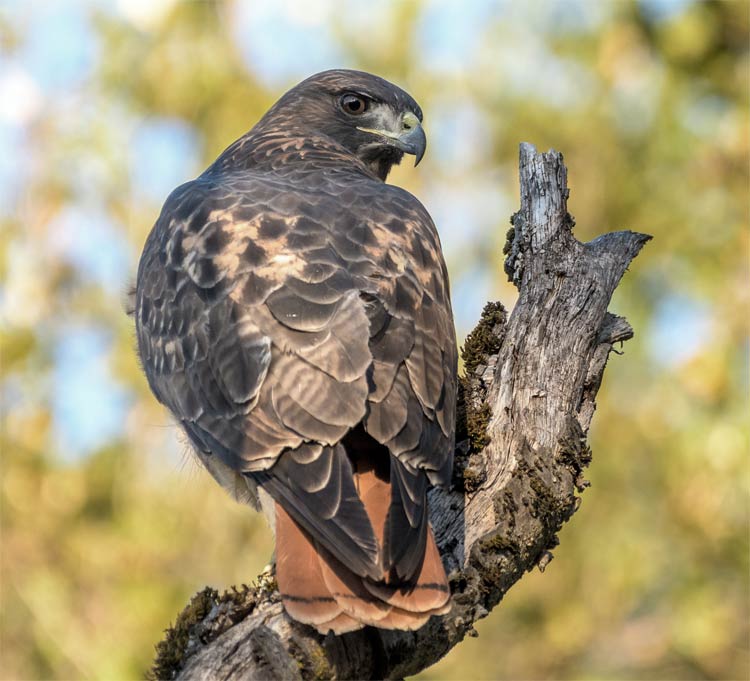
If you’re interested in exploring the fascinating world of animals and want to share your knowledge, consider checking out biology tutor vacancies to turn your passion into a profession.
Recommended
- Fastest animals Top 100
- Fastest mammals Top 10
- Cheetah
- Most venomous snakes – Top 10
- Largest eagles – Top 10
- Largest birds of prey
- Animals records
- Largest crocodiles
- Longest whales
- Heaviest whales
- Longest snakes
- Most venomous snakes
- Largest sharks
- Top-flying birds
- Smartest dog breeds
- Heaviest dinosaurs
- Longest dinosaurs



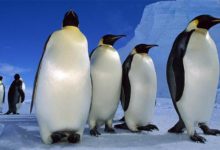

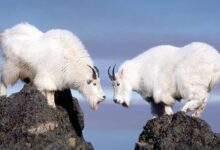


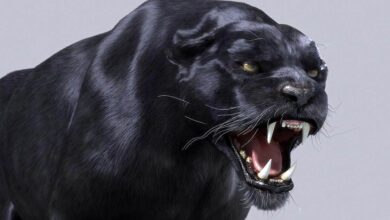
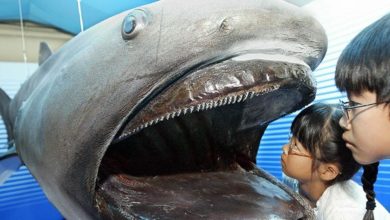








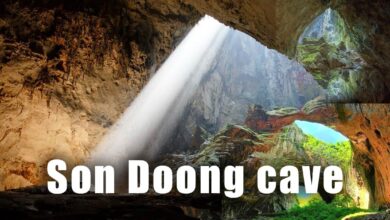
I didn’t know that eagle is so fast. Impressive!
this does not give any prove that the bald eagle is one of the fastest birds that can fly.
Never knew peregrine falcons could fly so fast.
What about the Raven? They are said to be pretty spectacular when they’re flying; they’re seen indulging in aerobatic activities.
Raven can fly with maximum speed of 50 km/h (31 mph).
I love the topic, but there is a conceptual problem including diving speed in direct comparison to level flight speed for birds, even if it’s labelled. At maximum dive speeds, the falcon can hardly be said to be flying at all. With the direction of travel being very near vertical , and virtually all motive force coming from gravity, it’s wings mostly retracted, and every effort and feature strained towards lowest possible drag, this motion, while admittedly stunningly fast, is basically a directed low-drag fall, utterly different from, say, the Common Swift, which can actually >>propel itself<< in level flight at 106mph! I stand in awe of both forms of motion, but would never include them in the same chart of speeds. For many birds, diving is simply not a major part of the flight repertoire.
It's a little like saying the second fastest land animal is a cheetah, and the fastest land animal is a cheetah that fell off of a thousand foot cliff! :-).
scobie a cheetah really? Did you factor in wind speed? Lmao
Diving is still a form of controlled flight it still uses its wings and tail feathers for precision and not to mention the amount of power it would use to slow down to accurately collect its prey coming out of a 200 mph dive then come to an Almost immediate Stop is an awesome feat to say the least